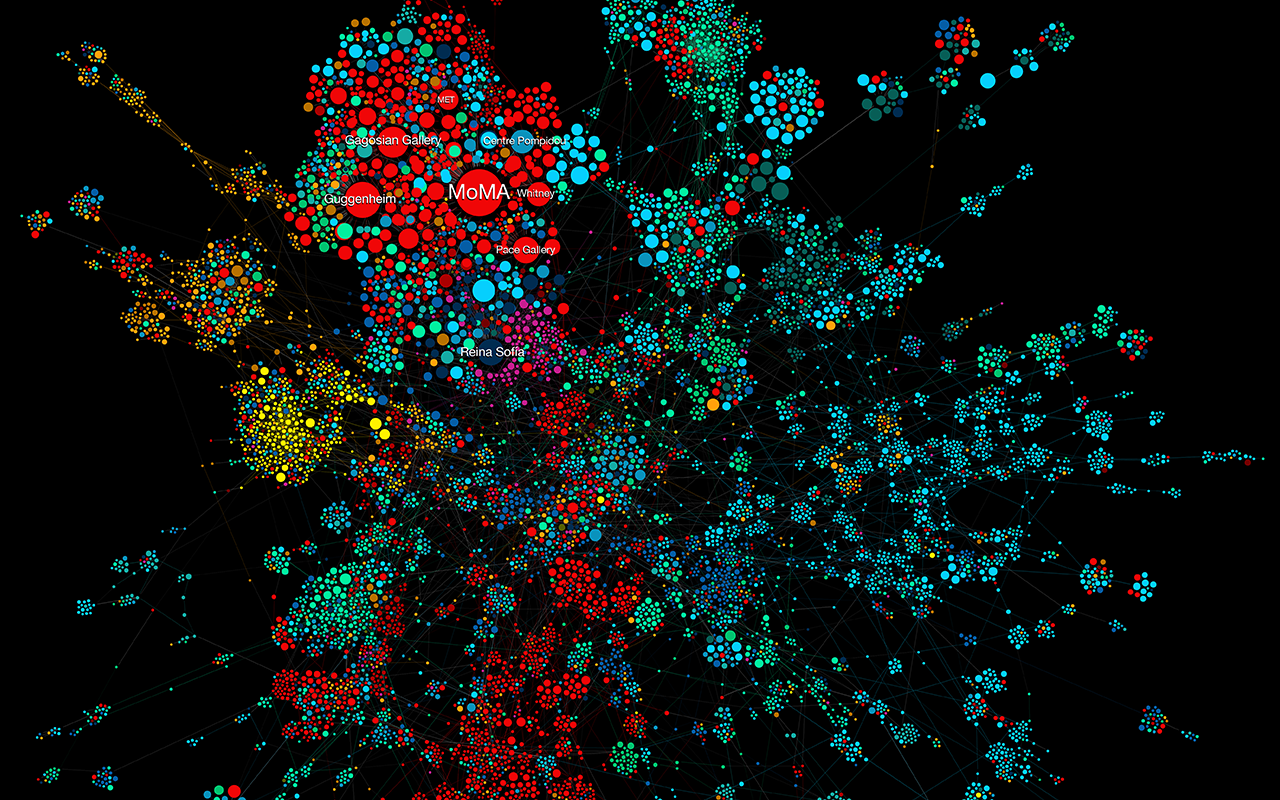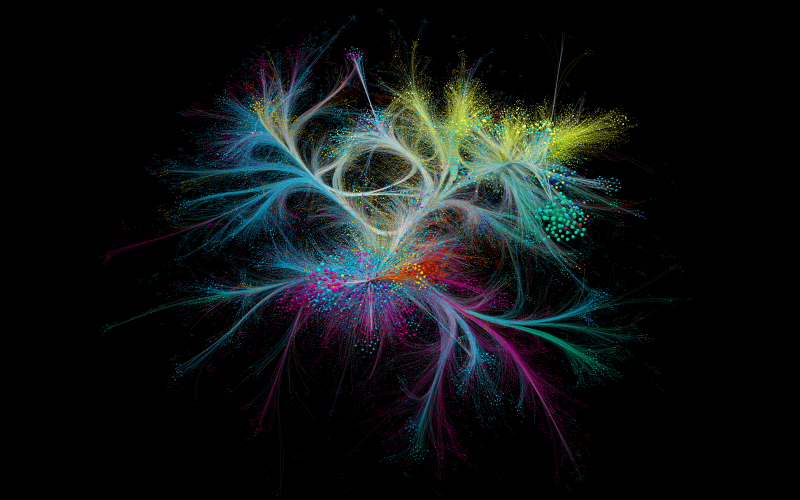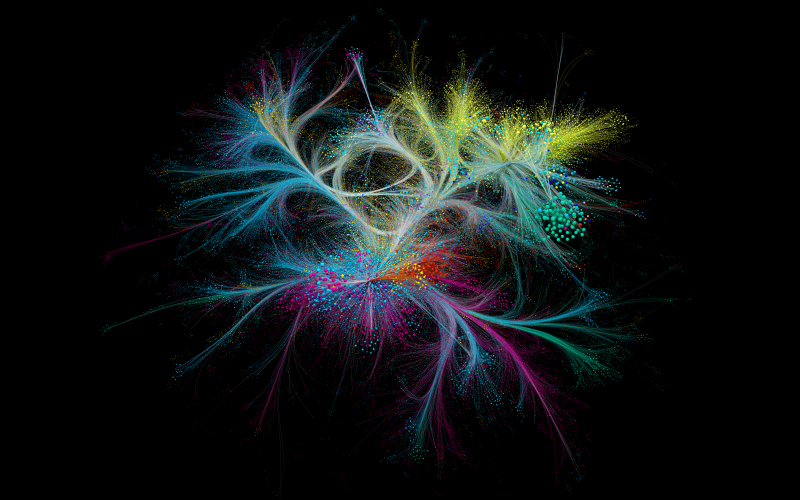- Event
- Talk
Art Networks
Mitali Banerjee, Albert-László Barabási, Viola Lukács and Maximilian Schich in conversation
Thu, December 02, 2021 7:00 pm CET
- Location
- Online
- Language
- English
What are art networks and how did they change over time? While scientists Mitali Banerjee and Maximilian Schich shed light on this question from a theoretical point of view, curator Viola Lukács and physicist Albert-László Barabási actively participate in the art network.
Mitali Banerjee studies the relationship between fame, creativity and social networks in creative industries. Her empirical contexts include early 20th century Modern artists and jazz musicians. She examines how innovator's social networks shape how well-known they are beyond their peers. In related research she is examining, how producers' reputation among their peers shapes the amount of attention they receive in mainstream press.
In another approach, the BarabásiLab began applying the tools of network and data science to the art world in 2016. The visualisations of »The Art Network« which can be seen in the exhibition »BarabásiLab. Hidden Patterns« at ZKM capture the largely invisible network between thousands of art institutions.
Viola Lukács is working as a curator, researcher and advisor for digital art, generative art and NFTs. Her career shows that art networks changed drastically within the digital sphere of cultural production that uses platforms such as Twitter and diverse NFT market spaces to discuss art, exchange knowledge and create interest pools.
Maximilian Schich developed a macroscopic view of cultural history producing information through revealing human mobility patterns and cultural attraction dynamics by using large sets of birth and death records of more than 150,000 individuals. The resulting network helps to retrace cultural narratives of Europe and North America using large-scale visualization and quantitative dynamical tools and to derive historical trends of cultural centers beyond the scope of specific events or narrow time intervals.
Participants
Brooke Foucault Welles (Associate Professor, Northeastern University, Boston)
Martino Mauro (founder of Visual Artificial Intelligence Lab, MIT-IBM Research)
Carlo Ratti (architect, engineer and professor at MIT)
Heidi J. S. Tworek (Associate Professor of History and Public Policy; new book: »News From Germany«


